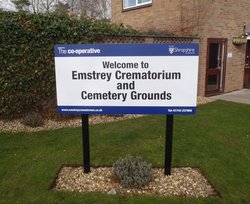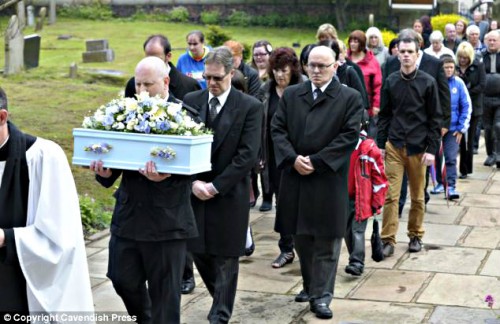The Bonomy report is published today in Scotland. Its 64 recommendations will address cremation practice in that country and, by extension, throughout Britain. They will impact the NHS, funeral directors and cremation authorities, especially the ICCM and the FBCA.
Shockwaves are expected.
Lord Bonomy’s brief was to “examine the policies, practice and legislation related to the cremation of infants in Scotland and provide recommendations for the future which will ensure that no-one in Scotland ever again has to suffer the distresses that were highlighted by the Mortonhall Investigation Report.”
Reminder: from 1967 until 2011 parents of babies who had died antenatally or perinatally in Edinburgh were informed, on the authority of Mortonhall crematorium, that there would be no ashes after cremation. Hundreds of families were affected.
This is not just a Scottish problem. For a medley of muddled reasons there seems to be no mandated practice nationwide for the cremation of infant remains nor any general awareness that ashes can be recovered from foetuses as young as 17 weeks. As a result, there are probably vastly varying outcomes from crematoria everywhere. Here’s just one (Scottish) example. Until very recently ashes had not been returned in any of Aberdeen’s baby cremations since 2008, while in Inverness 100% were returned. In Fife, ashes were recovered in 45 out of 87 cremations of stillborn babies and those aged up to one year.
What would the picture look like if we had figures for the whole of the UK?
George Bell, manager in charge of Mortonhall for 30 years until 2011, has distanced himself from criticism and blamed funeral directors for giving the wrong advice to parents:
“I feel for them and apologise if [parents] have been given wrong advice which led them to choose cremation and not have the option of burial … I tried my best to make sure that the message got out that there might not be the opportunity of recovering ashes after the cremation and we provided alternatives but unfortunately relied on frontline professionals. I must emphasise the crematorium staff didn’t make funeral arrangements.”
Bell also blames politicians:
“Sadly there’s no legal status for non-viable foetuses and as an industry we have worked hard to try and raise standards but to raise standards we need the legislation to go with that. I think the industry needs clear legislation as to what the procedures are. There’s no legal definition as to what ashes are – I think this needs to be addressed.”
The record shows that there is no agreement among cremation authorities about what ashes are, either:
“The FBCA (Federation of Burial and Cremation Authorities) consider that ashes consist of cremulated bone to the exclusion of any other source of ash obtained from the burned coffin, clothing or soft toys cremated along with the baby. The ICCM (Institute of Cemetery and Crematorium Management) considers ashes to include all ashes from the cremation, both cremulated bone as well as ash from
items which were mementos or part of the fabric of the baby’s last resting place. Tim Morris, Chief Executive of the ICCM, was interviewed on camera about this distinction by Mark Daly of the BBC in a broadcast in April 2013 when he indicated that: “I have only heard about this distinction in the last few months.” “[Source]
Things have subsequently gone from bad to worse in Aberdeen, where it is now alleged that babies were cremated together with adults — playing to the direst public misgivings about what really goes on in crematoria.
In England only one case has been reported so far but you wonder how many others might have been and may yet be. The culprit is Emstrey  crematorium in Shrewsbury where only 1 in 30 sets of ashes have been given to babies’ families since 2004. The fact that it is run by Co-operative Funeralcare is at best semi-relevant. The verdict of a former Emstrey manager, Ken West, is devastating:
crematorium in Shrewsbury where only 1 in 30 sets of ashes have been given to babies’ families since 2004. The fact that it is run by Co-operative Funeralcare is at best semi-relevant. The verdict of a former Emstrey manager, Ken West, is devastating:
“I see absolutely no reason why cremated remains were not produced. The issue for me is they were not captured. They were either in the flue system or workers didn’t take the trouble to check whether there were any ashes before introducing the next cremation. So it’s very possible those babies’ ashes got mixed in with the next cremation.”
On this blog Ken West has written:
“I was a cremator operator in the 1960′s and ashes were always returned for baby or infant cremations … At no time have I ever accepted that no ashes exist. Had I accepted that then I would have considered cremation unacceptable and advised burial as the better option.”
If it has been demonstrated that ashes can always be retrieved, why does the ICCM continue to advise: “The hospital must inform parent(s) that ashes may not be recovered from cremation.”? And why does the FBCA advise: “In cases where bereaved parents desire the cremation of an infant or of foetal remains, they should be warned that there are occasions when no tangible remains are left after the cremation process has been completed.”
Elish Angiolini’s Mortonhall Investigation report expresses impatience with this muddled thinking: “The existence or otherwise of ashes following the cremation of foetal remains ought to be a matter of fact; either there is some residue from the human tissue or there is not.”
The FBCA states that there may be no tangible remains left after cremation because of “the cartilaginous nature of the bone structure.” This sounds scientific, but is it? Compare it with this:
Experimental research has been undertaken to quantify the percentage of bone (bone ash or calcined bone) remaining in human skeletons following cremation. Trotter and Hixon (1974) studied skeletons from an early foetal period through to old age. This included 124 male and female foetuses of American Caucasoid and Negroid ancestry, which ranged in age from 16 to 44 weeks gestational age. It was possible to record the ash in even the youngest and lightest skeletons, the lightest being a white male of 16 weeks gestation which weighed 3.4 g pre-cremation. [Source 2.8]
Note: the above research is all of forty years old.
Compare the FBCA statement also with this. In a photograph of the cremated remains of a 17-week-old foetus at Seafield crematorium:
Bones [are] identifiable on the image include the femur, humerus, mandible, ilium (pelvic bone), the pars lateralis and possibly basilaris of the occipital bone (skull), radius, ulna, clavicle and a minimum number of 12 ribs. It is likely that the fibula is also present but it is difficult to distinguish clearly. [Source 2.8]
Given the extraordinary sensitivity of this issue, the recommendations of the Bonomy report are going to make for very interesting reading. We can’t give you a link because we are without an internet connection today. We believe this will take you to it.



Good morning Charles, the report is on this link
http://www.scotland.gov.uk/Publications/2014/06/8342
The Scottish Government has accepted the Commission’s recommendations without exception. The full government response, outlining the Scottish Government plans for taking forward the recommendations forward will be published on the Commission webpages this afternoon from approximately 2.30 pm and can be accessed using the link below:
http://www.scotland.gov.uk/Topics/Health/Policy/BurialsCremation/CremationCommission
Hi Charles
I agree regarding your comment for the management of Emstrey Crem…….but given that the majority of the population are very very uncomfortable in attending a Crem service, use of the term “Welcome to……….” isn’t overly tasteful, is it…………………..?
and as usual Funeralcare have to get their name across in everything that they do
this/these are side issues (of course), your input into this serious issue is very essential
best
andrew